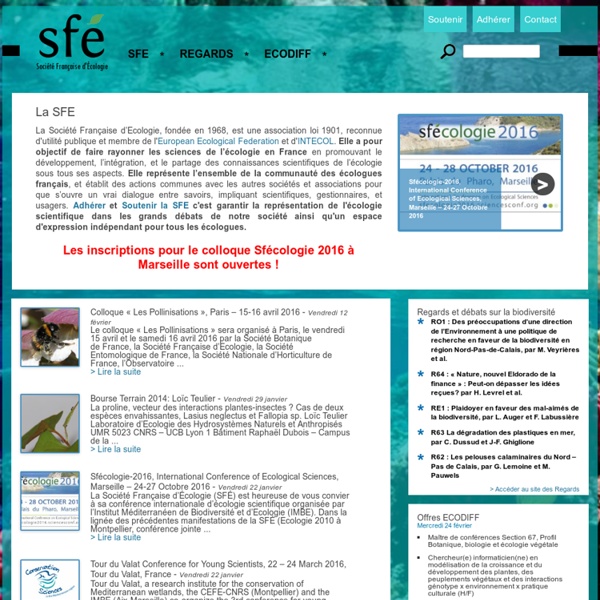



COAL Association pour la sauvegarde de la biodiversité TENDUA a été créée en 2008, après un voyage en Inde où, en dépit de nombreux parcs nationaux, la faune sauvage et ses habitats sont menacés. Le constat est malheureusement planétaire : partout dans le monde, la biodiversité est en danger, sur terre et dans les mers. La 6e extinction majeure de biodiversité est en cours : en 150 ans l’homme a réussi à détruire son environnement comme il ne l’avait jamais fait auparavant. Les précédentes extinctions connues des scientifiques étaient le résultat d’un processus évolutionnaire ; or aujourd’hui, l’équilibre de la planète est menacé par les activités humaines. En août 2013, il a été estimé que l’humanité, par sa consommation effrénée, a dépassé la capacité de régénération de la Terre. Cela étant, nous n’avons plus le temps d’être pessimistes. Une nouvelle relation entre l’homme et la nature TENDUA propose à chacun de réfléchir à un nouveau type de relation entre l’homme et la nature. Adhésions et partenariats Comment adhérer ?
Association Française interprofessionnelle des Ecologues Festival Temps d'Images The Biodiversity Hotspots Page Content Life on Earth faces a crisis of historical and planetary proportions. Unsustainable consumption in many northern countries and crushing poverty in the tropics are destroying wild nature. Biodiversity is besieged. Extinction is the gravest aspect of the biodiversity crisis: it is irreversible. While extinction is a natural process, human impacts have elevated the rate of extinction by at least a thousand, possibly several thousand, times the natural rate. In a world where conservation budgets are insufficient given the number of species threatened with extinction, identifying conservation priorities is crucial. The biodiversity hotspots hold especially high numbers of endemic species, yet their combined area of remaining habitat covers only 2.3 percent of the Earth's land surface. Hotspots in Context Hotspots Defined Impact of Hotspots Hotspots Revisited Conservation Responses Subsection 01 Subsection 02 Subsection 03 Subsection 04 Subsection 05
Bienvenue à la SNPN - Société Nationale de Protection de la Nature Green Cross France et Territoires GBIF : Global Biodiversity Information Facility Try out the new GBIF portal! Why not try out the new GBIF portal at www.gbif.org, which has many more features and includes lots of information about the GBIF community, including great examples of data uses in research and interesting applications? The old GBIF data portal which you are viewing now will continue to be supported until we are satisfied it can be taken down without causing major inconvenience. Be aware that the content here is static and has not been updated since the launch of the new portal on 9 October 2013. Welcome to the (former) GBIF Data Portal Access 416,242,316 data records (363,215,360 with coordinates) shared via the GBIF network. Explore Species Find data for a species or other group of organisms. Species Information on species and other groups of plants, animals, fungi and micro-organisms, including species occurrence records, as well as classifications and scientific and common names. Example species: Puma concolor (Linnaeus, 1771) Explore Countries Countries France
Estuaire de la Seine - Territoire de l'Eau The Environmentalist générations-futures » Le site sur les dangers des pesticides et des OGM ECNC : expertise Centre for biodiversity and sustainable development Le Scénario Zero Waste Retrouvez le site internet dédié : LESCENARIO.ZEROWASTEFRANCE.ORG Parlez de nous sur les réseaux sociaux pour la dernière semaine en adoptant l'avatar Z'Hero Waste de votre choix ! Le lancement du mouvement Zero Waste en France en février dernier a attiré plus de 500 participants. Le sujet intéresse et interpelle... mais de trop nombreux citoyens et décideurs politiques ou économiques ignorent encore ces démarches, mises en place dans quelques dizaines de collectivités dans le monde, qui permettent de réduire les déchets de manière drastique : jusqu'à plus de 80% de déchets évités, recyclés ou compostés (contre 35 % en moyenne en France). Pour aller plus loin, nous avons donc décidé d'écrire un livre, qu'une maison d'édition engagée a accepté de publier. Nous souhaitons que ce scénario donne à tous l'envie d'agir, grâce à des solutions concrètes, pour mettre en place une société économiquement et écologiquement viable. Flore, Delphine, Laura et Edouard. Spoiler...
UNEP-WCMC